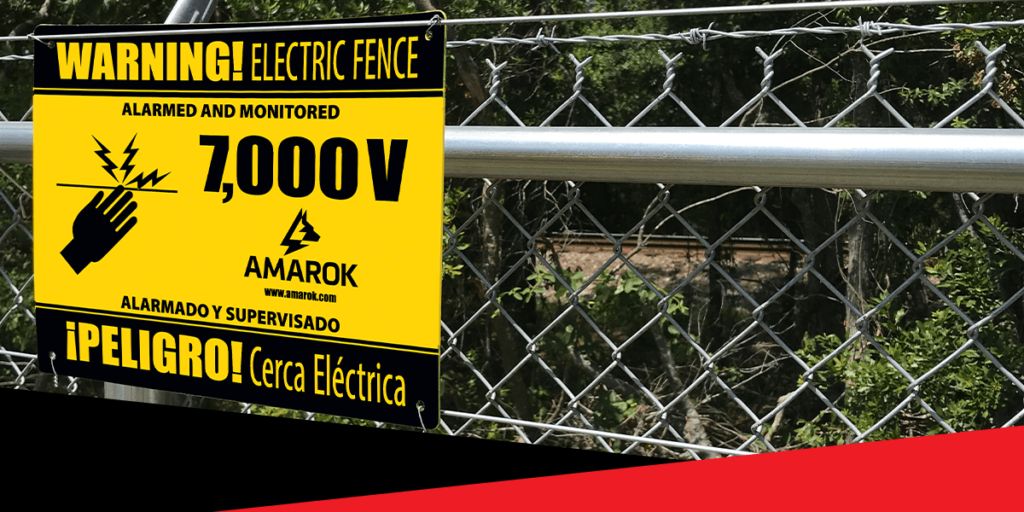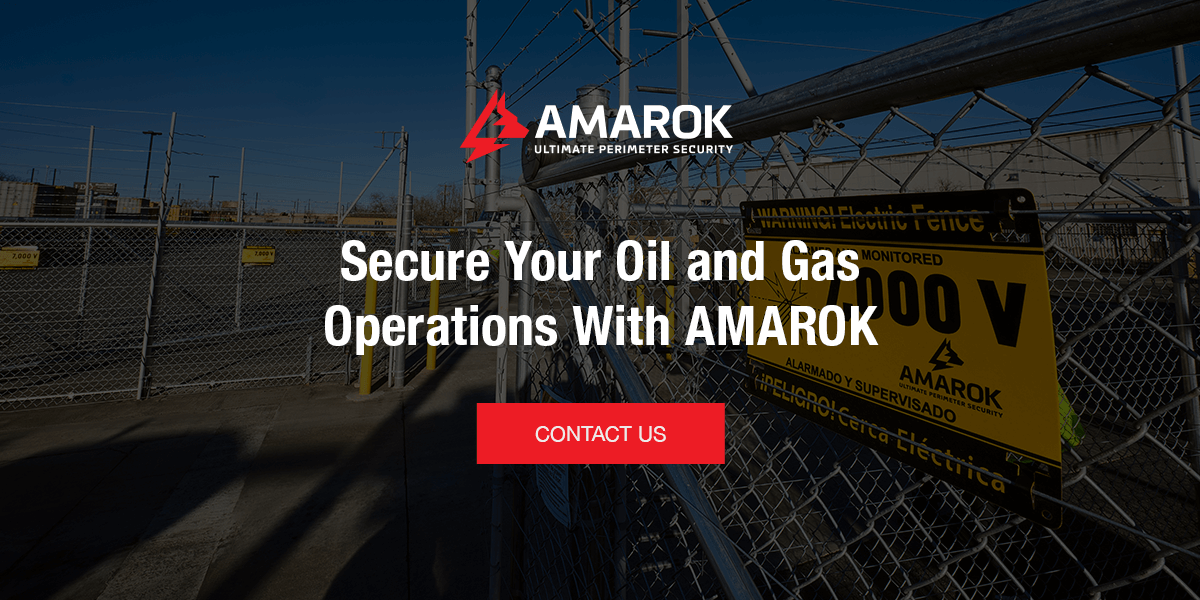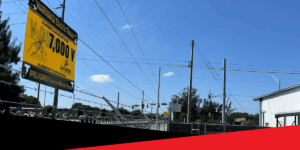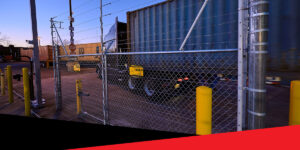The oil and gas industry is a vital contributor to the global economy. It accounts for over 3% of global GDP and employs over 7.6 million people worldwide. The oil and gas sector accounts for almost 55% of the world’s total energy consumption. The industry also helps stimulate growth in other sectors such as manufacturing, construction, and services.
In recent years, there has been a rising concern in security threats targeting oil and gas operations. Comprehensive protection strategies are more crucial than ever for maintaining global energy security and economic stability.
The Importance of Securing Oil and Gas Operations
Oil and gas operations have faced rising threats from eco-terrorism, vandalism, cyberattacks, and theft. The industry faces 39% of critical infrastructure attacks. The consequences of inadequate security in oil and gas operations extend beyond immediate financial losses. Security breaches in oil and gas facilities can lead to:
- Production disruptions
- Environmental impact
- Regulatory penalties
- Reputational damage
Prioritizing oil and gas safety offers numerous benefits, including:
- Safeguarding assets: Modern facilities house billions in infrastructure investment. Sites often contain specialized equipment that can take months to replace if damaged. Adequate security measures protect valuable infrastructure from theft, vandalism, and sabotage.
- Ensuring worker safety: A safe work environment contributes to employee satisfaction and retention, reducing turnover and associated costs.
- Growing operations: With robust security protocols, companies can confidently expand their oil and gas operations, knowing their assets are protected.
- Reducing litigation risk: Implementing robust safety measures minimizes the likelihood of accidents and security breaches, reducing the risk of costly legal actions.
- Safeguarding national security: The Department of Homeland Security classifies oil and gas infrastructure as critical. Disruptions in the oil and gas sector could potentially affect military operations, international relations, emergency services, and essential public utilities. Securing operations helps maintain stable energy supplies and supports global economic security.
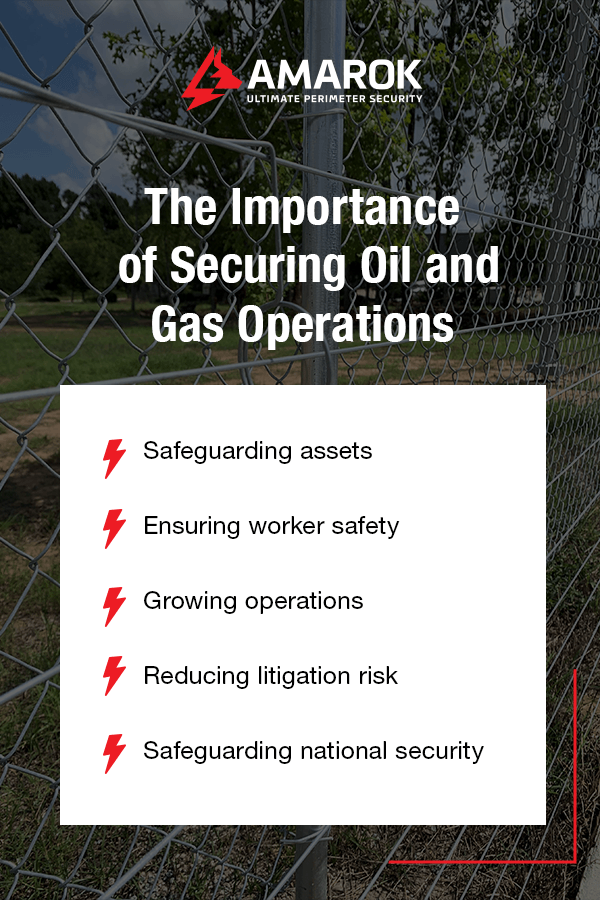
8 Safety Measures to Protect Oil and Gas Operations
Creating comprehensive oil and gas security requires a comprehensive, multi-layered approach. A multi-layered approach encompasses physical, technological, and human elements to address the security challenges in the industry. Here are eight essential safety measures for protecting oil and gas operations:
1. Enhanced Perimeter Security
Successful security starts at your property’s boundaries. Modern perimeter security combines multiple elements to create an effective barrier against unauthorized access. Strategic placement of cameras and motion sensors ensure adequate coverage in vulnerable areas such as storage facilities. These sensors integrate with central monitoring systems, enabling security teams to quickly identify and respond to potential threats.
High-intensity LED lighting systems eliminate dark spots and make suspicious activity easier to detect. Well-lit perimeters deter potential threat actors and improve the quality and effectiveness of video surveillance systems. Advanced lighting systems often feature motion-activated capabilities, conserving energy while maintaining readiness to draw attention when triggered.
Integrated alarm systems automatically alert security personnel and local law enforcement to potential breaches. These systems include weatherproof components that operate reliably in harsh conditions. Regular testing and maintenance ensure consistent performance and rapid response capabilities.
2. Employee Training and Awareness
Despite advances in technology and security systems, human error remains a leading cause of security breaches. Employees who lack proper training and awareness can inadvertently expose oil and gas operations to threats. Examples of human error include falling victim to social engineering tactics, neglecting security protocols, or failing to identify potential threats.
Oil and gas companies need to invest in exhaustive employee training programs that foster safety and security. These programs should cover a wide range of topics, including:
- Security problems: Employees should be well-versed in the company’s security policies and procedures. They should understand access control measures, incident reporting, and proper handling of sensitive information.
- Situational awareness: Training should emphasize the importance of maintaining a high situational awareness on and off the job. Employees should be taught to promptly identify and report suspicious activities and security vulnerabilities.
- Cybersecurity awareness: With the growing threat of cyberattacks, it’s crucial to educate employees about common cyberattack risks. This includes phishing emails, social engineering tactics, and the importance of strong passwords and multifactor authentication.
- Emergency response: All employees should be prepared to respond to various emergency scenarios. Regular drills and simulations can help reinforce training and ensure employees can act quickly and effectively in a crisis.
Effective training programs should be engaging, interactive, and tailored to the specific roles and responsibilities the employees. Making training relevant and relatable increases engagement and leads to better results.
3. Advanced Cybersecurity Protocols
Cyberattacks on oil and gas infrastructure can have severe consequences. Consequences range from data theft and financial losses to the disruption of critical operations and physical damage. Hackers may target control systems, supervisory control, data acquisition (SCADA) networks, or industrial devices to manipulate processes.
In 2021, the Colonial Pipeline Company faced a major ransomware attack, which forced them to shut down their pipeline system. This attack highlighted the vulnerabilities of many oil and gas facilities. Modern facilities rely on digital systems for everything from process control to security management, making cybersecurity essential for oil and gas safety.
Oil and gas companies invest in a multifaceted cybersecurity approach to combat the growing risk of attacks. Comprehensive cyberattack protection includes:
- Strengthening networks by implementing firewalls and intrusion detection systems to monitor network traffic for suspicious activity.
- Encrypting communications to protect sensitive data and security information from being stolen.
- Performing regular system updates and patches to address new vulnerabilities.
- Network segmentation to prevent security breaches from spreading throughout the facility.
- Implementing access control systems to ensure that only authorized personnel can interact with critical systems.
Security teams should also conduct regular penetration testing to identify potential vulnerabilities before criminals can exploit them. These tests simulate real-world attack scenarios, helping oil and gas facilities improve their defensive capabilities and response procedures.
4. Electric Security Fencing
Electric fencing delivers one of the most effective deterrents against unauthorized intrusion and theft for oil and gas facilities. The system is both a physical and psychological deterrent. The presence of an electrified fence sends a clear message that the facility is protected. Threat actors understand that any attempts to breach the perimeter will be met with immediate consequences. This visual deterrent can discourage many would-be trespassers from trying to enter the property.
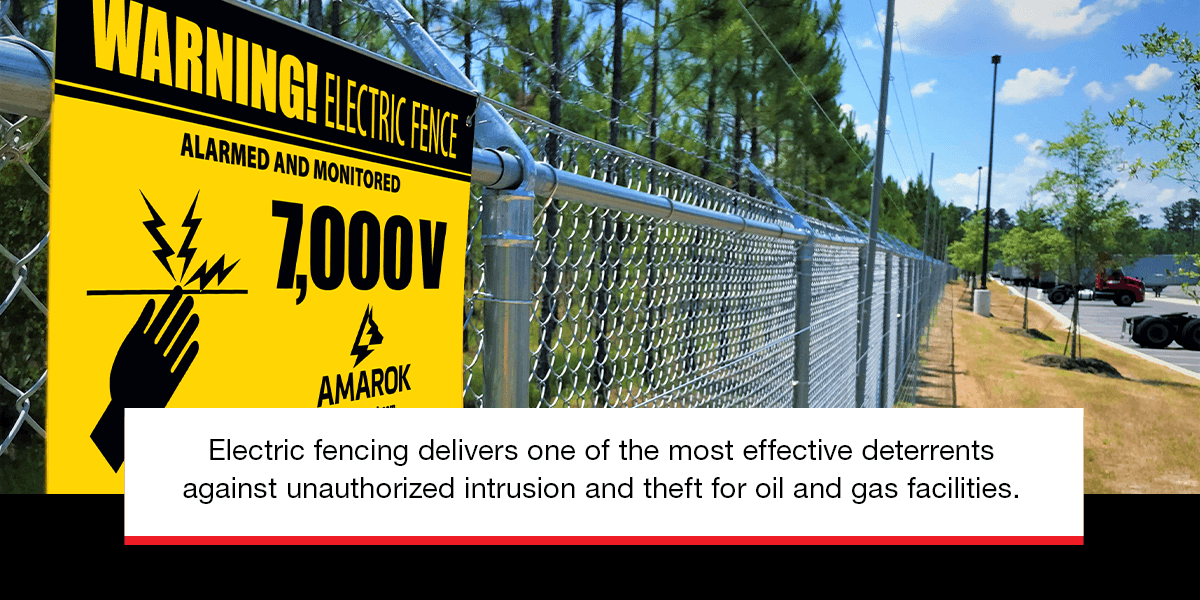
For those who persist, the electric fence delivers a pulsed electric shock designed to be memorable but not harmful. This experience is often enough to dissuade intruders from making further attempts. Clear warning signs alert potential intruders to the fence’s presence and capabilities, often preventing theft attempts before they even begin.
Another key advantage of electric fencing is its seamless integration with other security layers, including access control measures, security lighting, and alarms. Solar-powered operation ensures continuous security even during outages. Advanced monitoring capabilities alert security personnel to tampering attempts. Professional installation ensures proper grounding and safety features, and regular maintenance verifies consistent operation.
5. Collaboration With Law Enforcement and Specialized Security
The complex security challenges facing oil and gas operations require specialized response capabilities. Strong partnerships with law enforcement agencies such as police departments, state troopers, and federal authorities provide critical support for facility security programs. These relationships facilitate information sharing about potential threats and enable coordinated responses to security incidents.
Regular meetings with law enforcement representatives help facilities stay informed about regional security trends and emerging threats. Joint training exercises with facility security personnel improve response coordination and help identify potential gaps in security coverage. These partnerships also support investigation and prosecution efforts when security incidents occur.
Law enforcement agencies can provide valuable input during security assessments, offering insights based on their experience with similar facilities. This collaboration helps facilities develop more effective security strategies and improve their response capabilities.
Specialized security firms offer another valuable resource for oil and gas companies seeking to enhance their protection. These firms employ industry-specific knowledge, cutting-edge technologies, and proven best practices to address the unique challenges of oil and gas operations.
6. Video Surveillance Systems
Comprehensive video surveillance is an important element of effective oil and gas security. Video surveillance provides facilities with continuous monitoring, threat detection, and investigation capabilities. Advanced camera systems offer diverse benefits that enhance situation awareness, improve response times, and support evidence gathering:
- Real-time monitoring and recording: Video surveillance systems can monitor critical areas 24 hours a day, seven days a week. Strategically placed cameras can cover a wide area, including perimeters, entry points, storage facilities, and control rooms, ensuring every location is covered.
- Automatic threat detection: Video surveillance systems can include intelligent video analytics, which use advanced algorithms to automatically detect and alert security personnel to potential threats. These analytics can be programmed to recognize specific behaviors such as loitering, tailgating, or object removal.
- Integration with other security systems: Integrating video surveillance with other security systems, such as access control and electric fencing, creates a comprehensive and cohesive security ecosystem. This integration allows security personnel to better understand potential threats and respond more effectively to incidents.
- Evidence preservation and analysis: Video surveillance systems offer high-resolution imaging and advanced features such as infrared night vision, motion detection, and wide dynamic range technology. These capabilities ensure clear footage even in challenging lighting and inclement weather. Capturing high-quality images and video allows surveillance systems to provide valuable evidence for incident investigations.
- Remote viewing capabilities: Cloud-based video management systems allow authorized personnel to securely access live and recorded footage from anywhere. This remote access capability enables security teams to monitor the facility off-site.
7. Intrusion Detection and Access Control Systems
Intrusion detection and access control systems provide additional protection. They ensure only authorized personnel can enter secure locations and that attempted breaches are promptly detected and addressed.
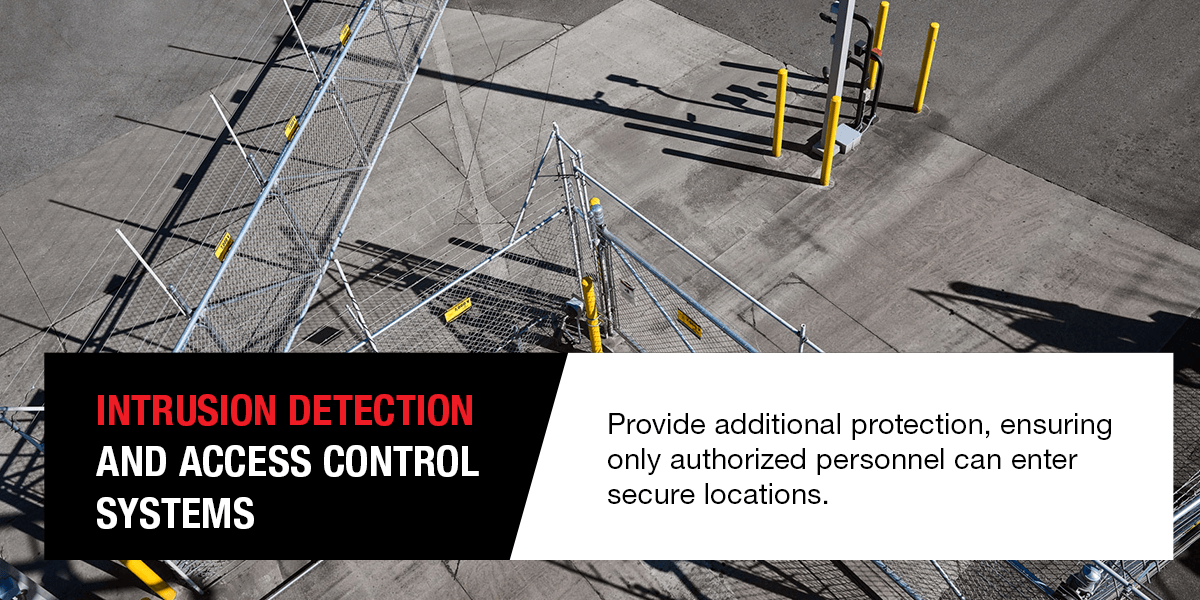
Building intrusion detection systems monitor and alert security personnel to unauthorized entry attempts using motion detectors, door and window contacts, and glass break sensors. Access control systems manage and restrict access to secure areas using authentication methods like keycards, fingerprint scanners, and PIN codes.
A Gate Access Control system is particularly effective for managing vehicle and pedestrian access at entry and exit points. They use credential readers, license plate recognition, and remote management capabilities to prevent unauthorized access. Integrating intrusion detection and access control with other security measures creates a layered approach that enhances protection.
Companies can also install alarm-based lighting solutions for intrusion detection. These stand-alone units combine bright lights and loud alarms. When the perimeter is breached, these alarm-based lights draw immediate attention to the affected area, disorienting intruders and alerting security personnel to the threat.
8. Regular Risk Assessments and Updated Incident Response
Proactive risk management is essential for staying ahead of evolving oil and gas security threats. Regular risk assessments help identify vulnerabilities, prioritize mitigation efforts, and allocate resources effectively.
Conducting thorough assessments involves evaluating all aspects of site operations, including physical security, personnel, and processes. Analyzing data from various sources and assessing the likelihood and potential impact of risks allows companies to focus on critical vulnerabilities. The data that security teams can analyze includes:
- Historical incident reports
- Security audit findings
- Threat intelligence from industry partners and government agencies
- Employee and stakeholder feedback
Incident response plans provide a structured framework for responding to security incidents and outlining roles, responsibilities, communication protocols, and procedures for containing and mitigating the impact of a breach. With a well-defined incident response plan, companies can minimize the damage caused by security incidents and ensure a swift and effective recovery.
Regularly reviewing and updating these plans based on risk assessment results ensures that oil and gas companies are prepared to handle evolving threats effectively.
Secure Your Oil and Gas Operations With AMAROK
Protecting oil and gas operations is a complex, ongoing challenge that requires an exhaustive, multi-layered approach. AMAROK is committed to helping oil and gas companies achieve the highest levels of safety and security with our industry-leading perimeter security solutions. We offer our flagship solution, The Electric Guard Dog™ Fence, plus enhancements like intrusion detection, access control, and video surveillance. Our comprehensive security-as-a-service model eliminates upfront costs and includes ongoing support and maintenance under one manageable monthly fee.
Contact us online to speak to a security expert about our multi-layered security solutions for your oil and gas operations.
